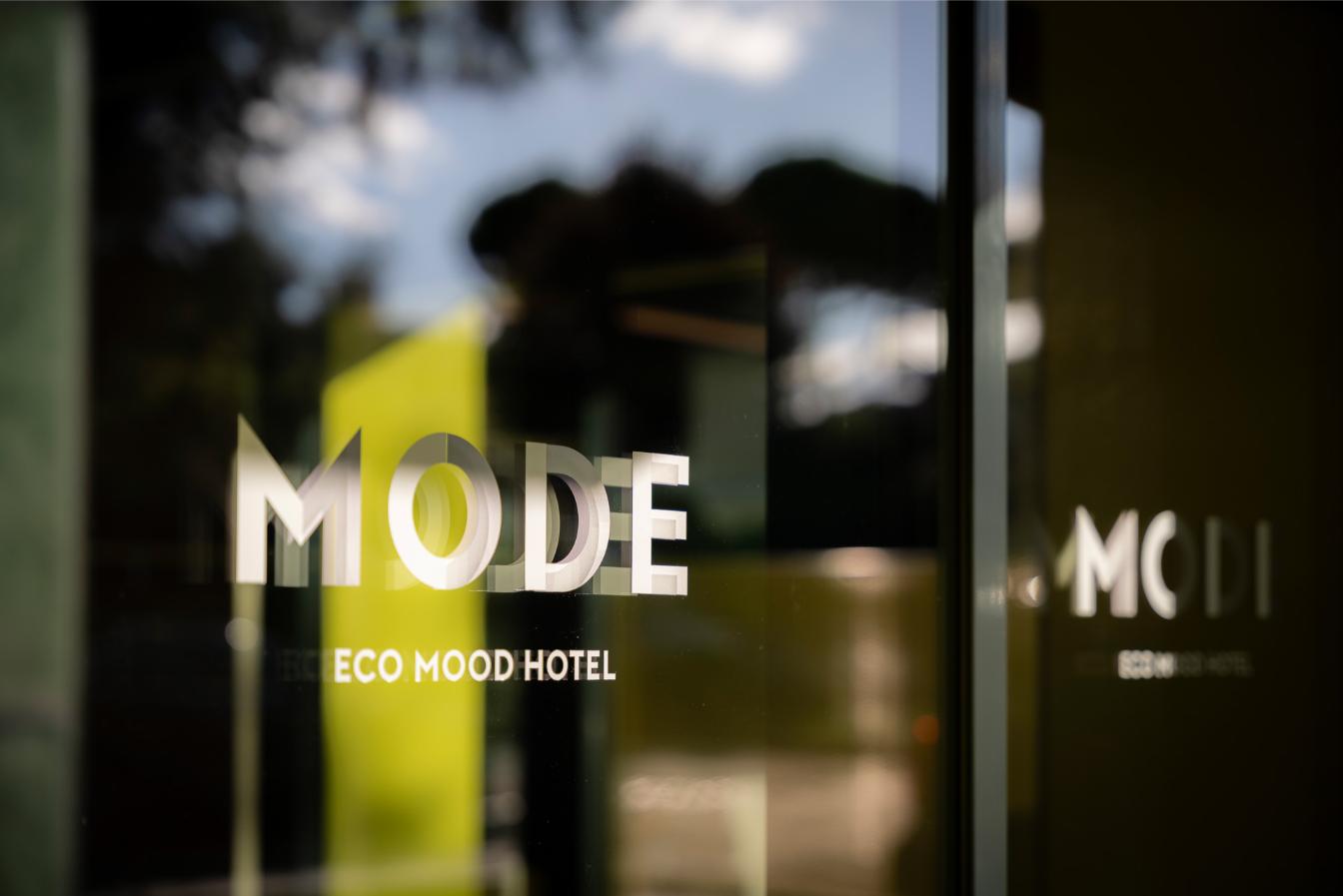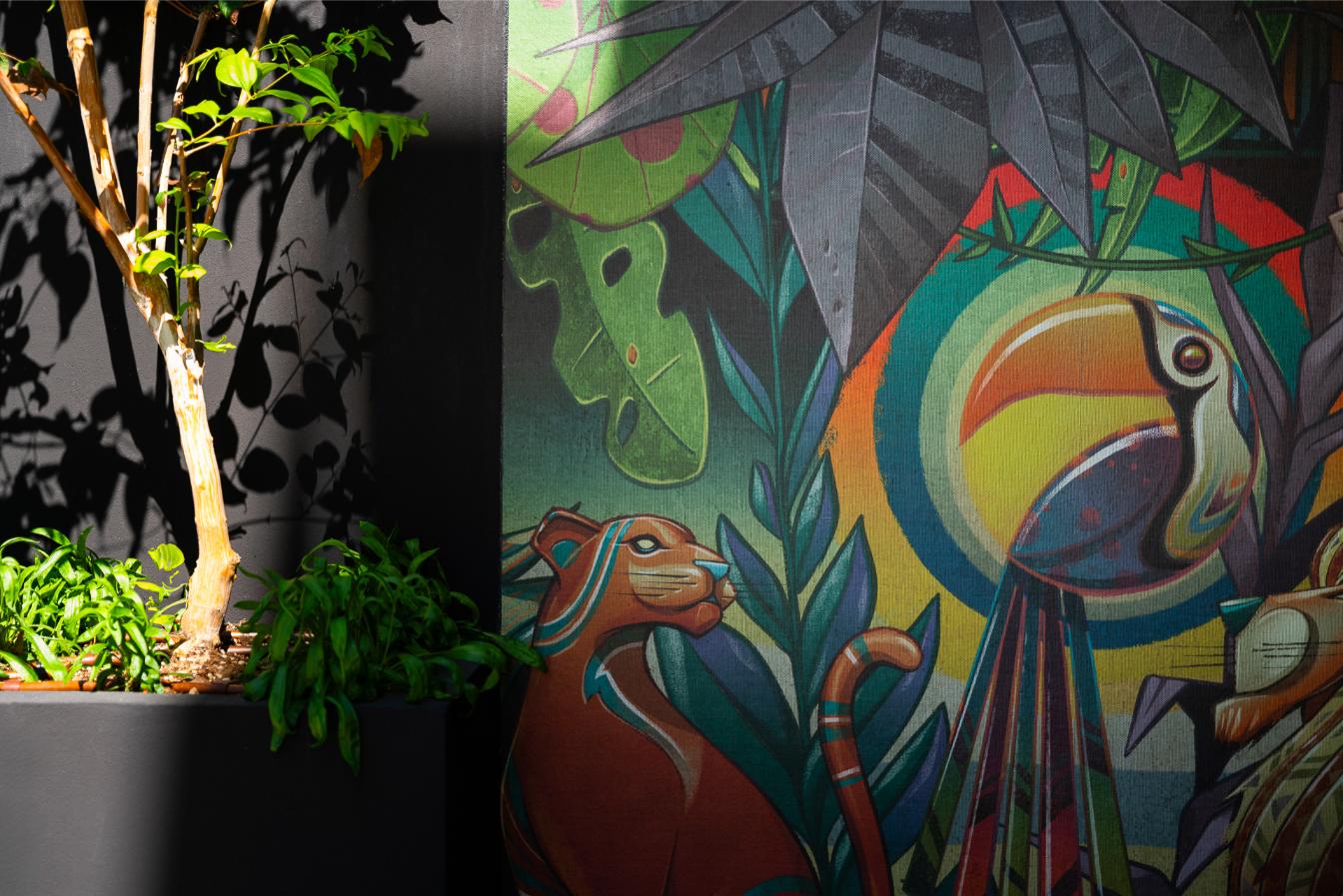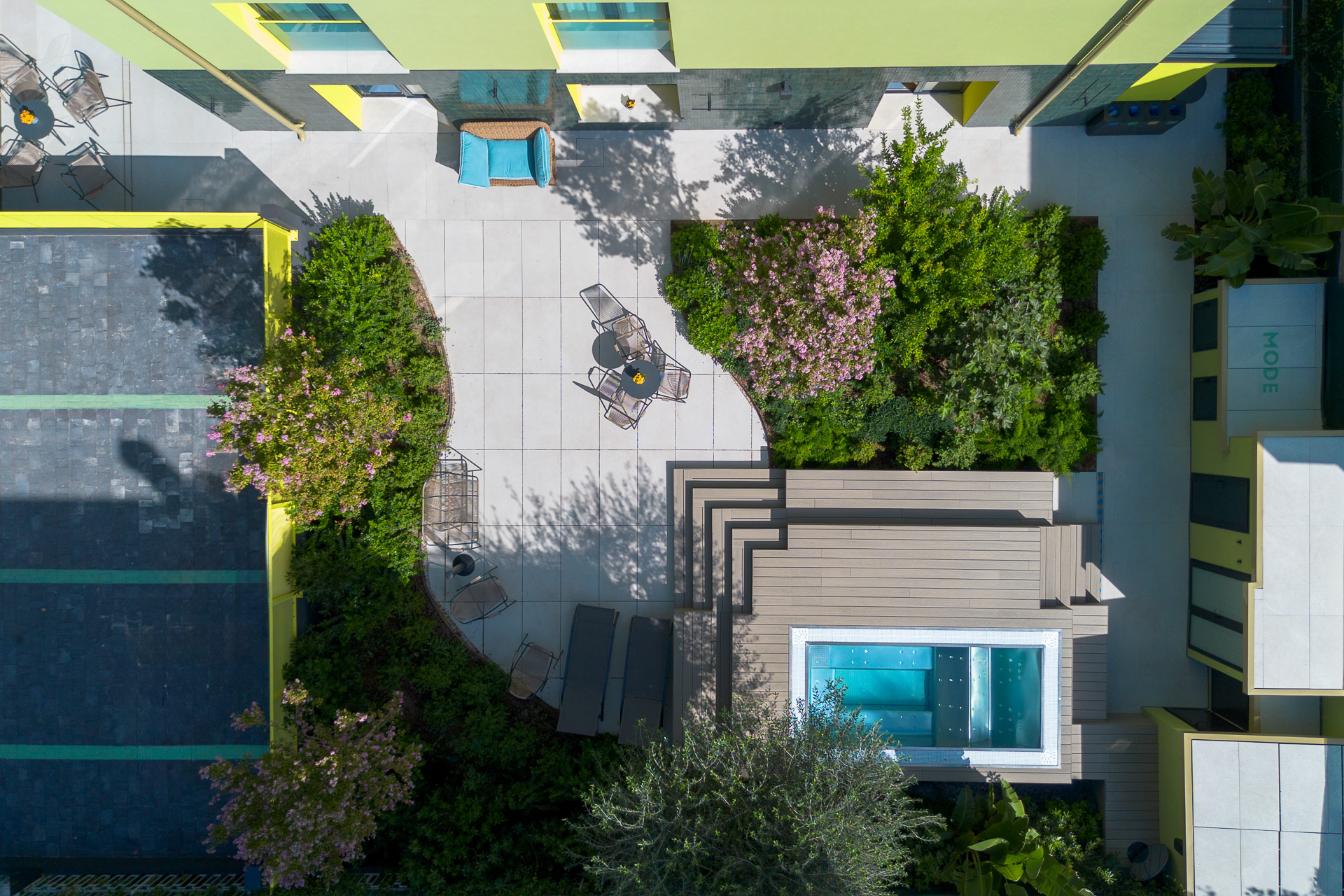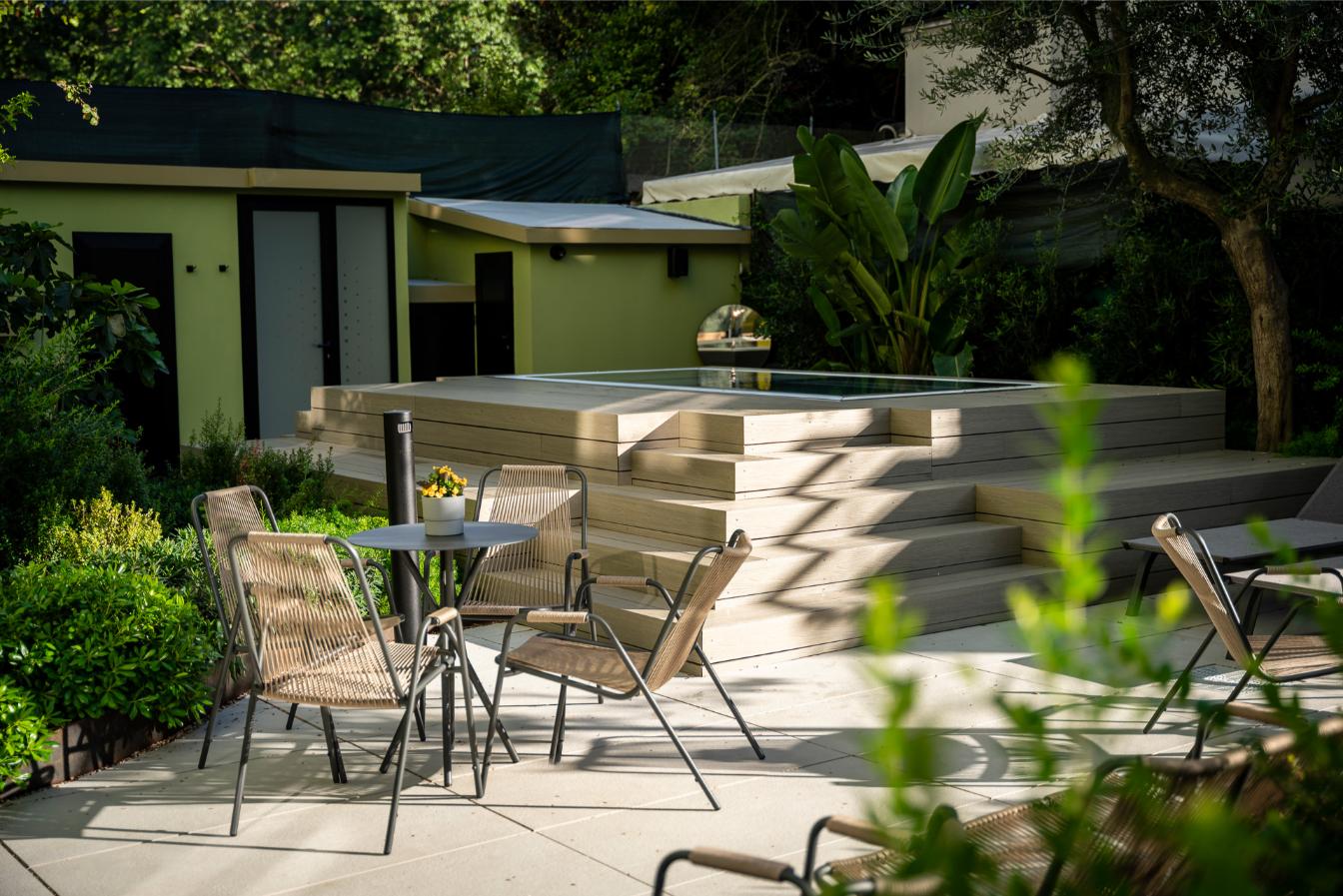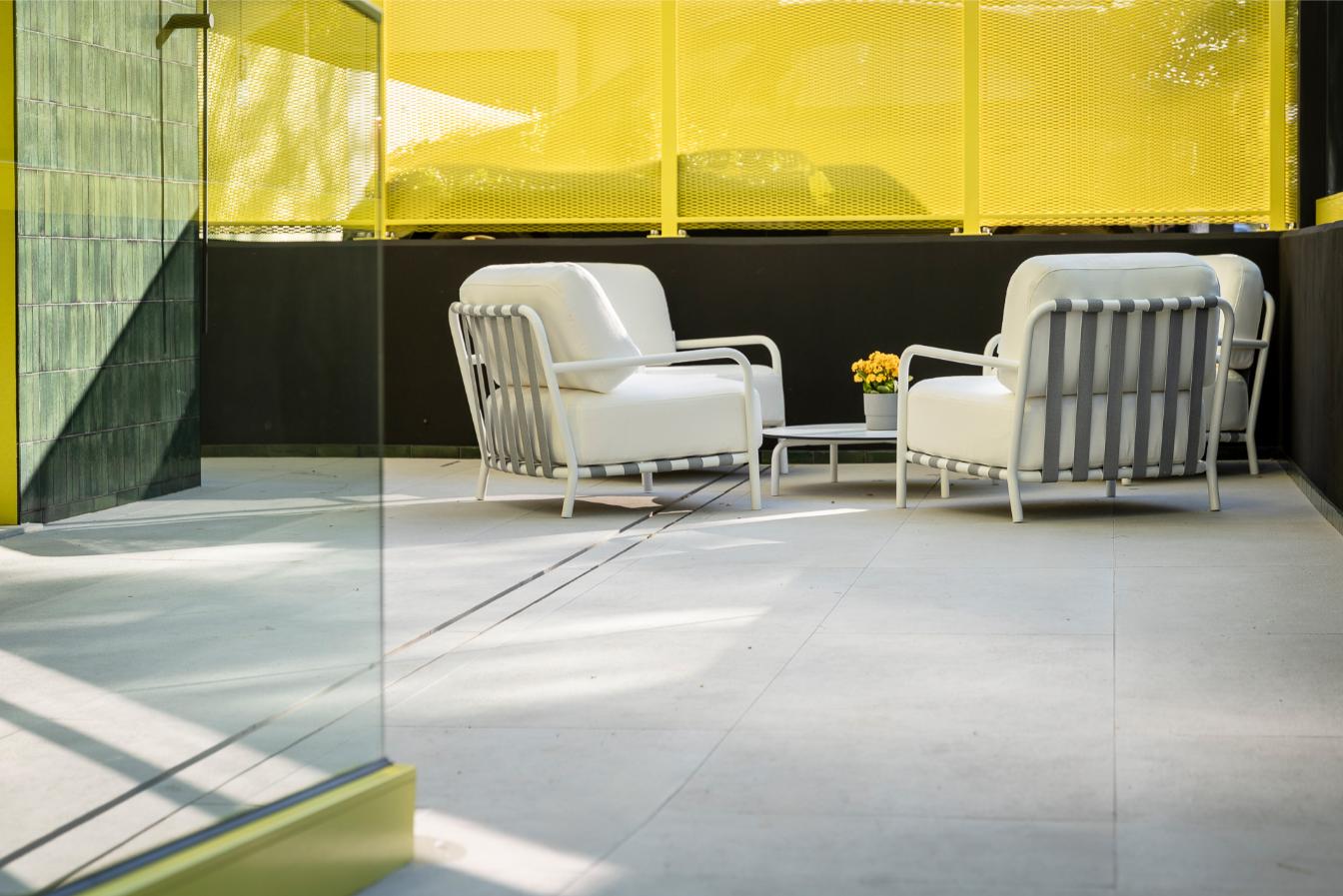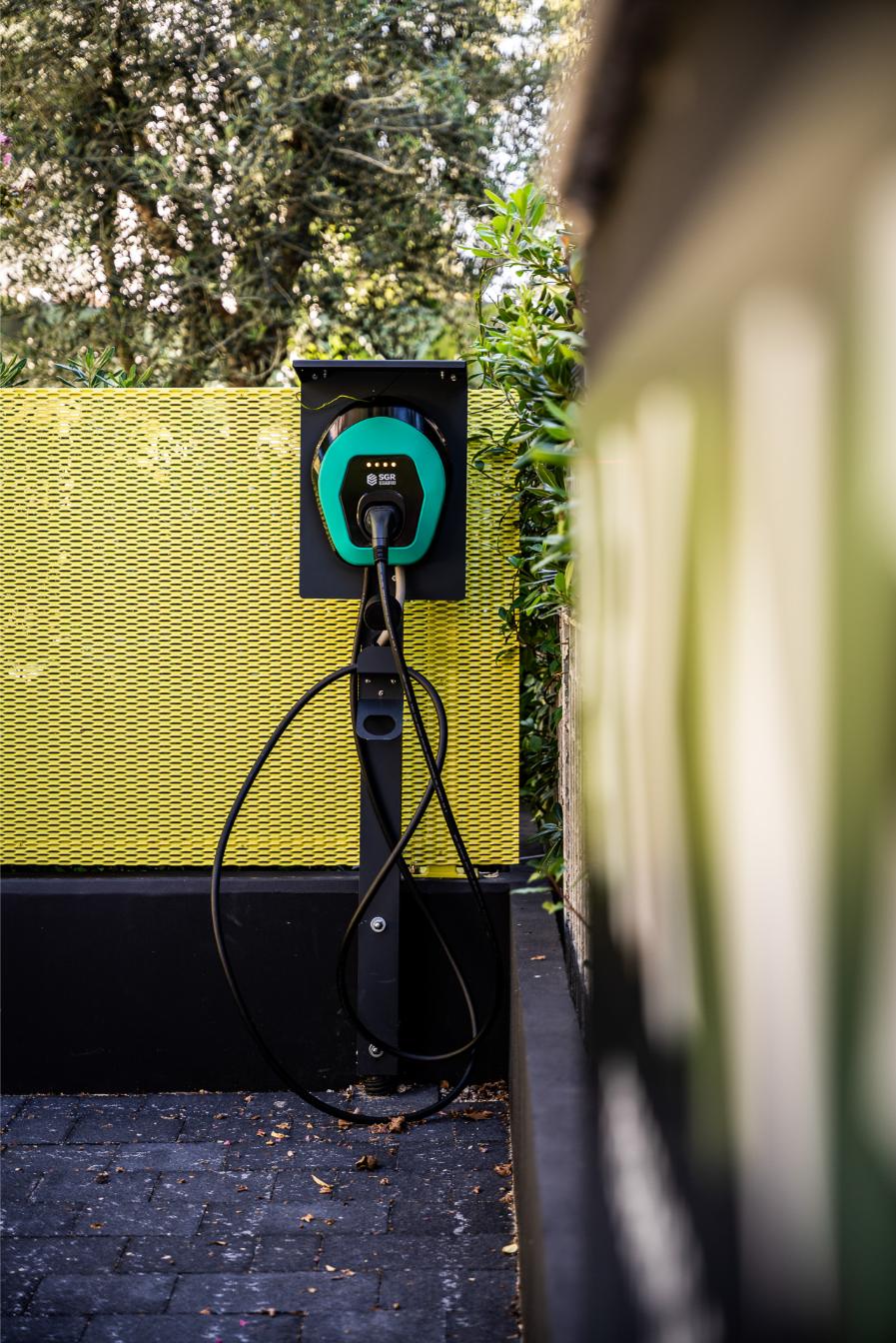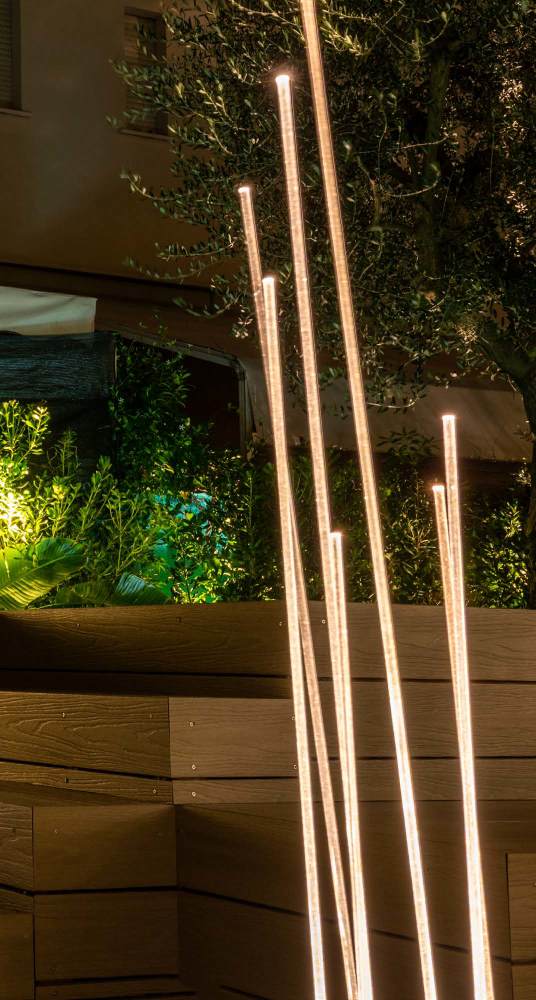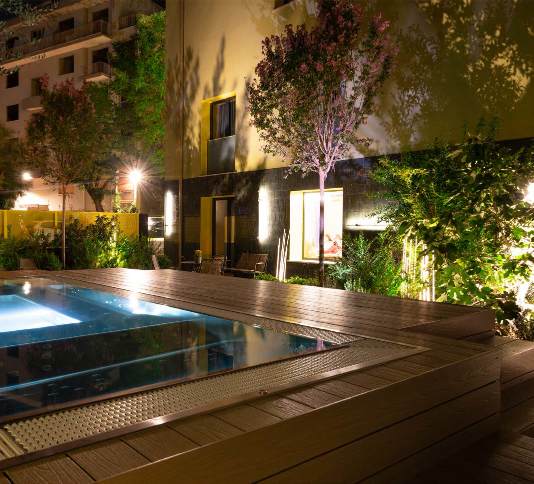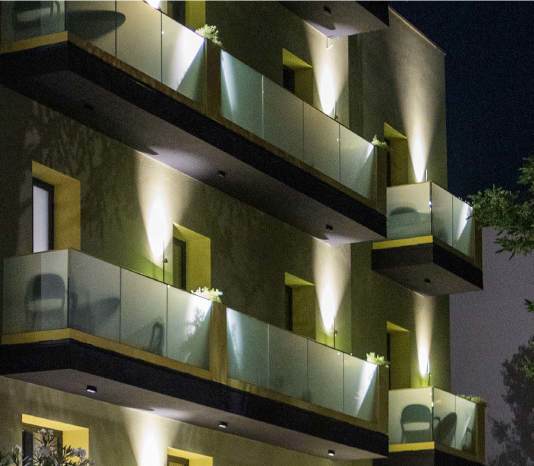Presentation
The hotel's exterior design, emblematically titled Green is the new blackwere designed by Rizoma ArchitectureThe focus was on creating an energy-saving building envelope, with energy production from renewable sources and protection from the weather.
Today, we are faced with a major challenge: to apply some of the principles involved in the world of sustainability and construction in a concrete and solid manner means combining intelligent solutions, controlling costs and evaluating the benefits of the choices made from the outset.

Materialboard project

The sustainable principles of Green is the new black
- Renovation and redevelopment of an existing building, without land consumption;
- Ceramics (local product, Emilia Romagna);
- Use of vegetation on low maintenance terraces;
- Thermal insulation in line with the DNSH principle;
- Installation of photovoltaic panels;
- Use of energy-efficient LED lights;
- Orientation of lighting downwards to avoid light pollution;
- Economic sustainability.
"In the rhizome there are no points or positions, as there are in a structure. (...) a rhizome does not begin and does not end, it is always in the middle between things, it is inter-being, (...) it is to move between things, to overthrow ontology, to dismiss the foundation, to annul beginning and end: from the multiplicity of thinking arises [every] form of life'.
Gilles Deleuze - Félix Guattari
Rizoma Architetture was founded in 2009, is based in Bologna and consists of a structure composed of a Project Manager, four Project Leaders, six architects, two interior designers and a social media manager. Rizoma Architetture has a working method that does not follow a hierarchical structure, believing that creativity, innovation and adaptability, rather than strict adherence to conventional rules, can be the most effective key to reading the world's phenomena.
Like the rhizomatic roots of plants, the structure of the studio can count on a dense network of internal and external collaborators: Rizoma Architetture is committed to teamwork, focusing in particular on research & development, the skills of young professionals and collaboration with the most innovative companies. The studio works on the development of projects in the hospitality and housing sector, smart living and smart working projects.
In recent years, the studio has been involved in several interior design projects for structures that combine hospitality, food & beverage, work and retail spaces. Rizoma Architetture's projects have been published in various international magazines and web portals, and some of them have won awards and mentions, in particular the project for The Student Hotel Firenze won the MIPIM Award 2019 in Cannes in the Best Mixed-Use Development sector.
John Franceschelli
Architect and founder of Rizoma Architetture, graduate of the Faculty of Architecture in Ferrara, postgraduated at Universitat Politecnica de Catalunya in Barcelona, director of the development department of green architecture and interior design within the practice. Specialised in the design of Hybrid Ospitality, Student Housing, Cohousing and Coworking. Tenaciously curious and a lover of doubt, searching for solutions for new sociality and fostering relationships between people.
Exterior Lighting Design
The lighting design of 'Green is the new black', the garden and the Garden Suite was designed by Chiara Tabellini by Comfort Hub.
The design was developed in full compliance with the recommendations of the relevant industry, thus ensuring compliance with all requirements for safety, energy efficiency and lighting quality.
The design research paid particular attention to the aesthetic integration of the lighting elements with the architectural concept, selecting solutions that enhance the spaces and exalt their characteristics, without compromising functionality.
Particular importance was placed on the operation and maintenance of the plant, choosing equipment and technologies that facilitate rapid intervention and reduce operating costs over time.
The project pays particular attention to the principles of environmental sustainability, adopting low energy consumption solutions, reducing light pollution and using materials and technologies that contribute to a lower overall environmental impact.
The combination of regulatory compliance, aesthetic coherence, management efficiency and environmental sustainability ensures a state-of-the-art lighting design capable of enhancing spaces and respecting the environment.
The sustainable principles of lighting design
- Respect for and compliance with the relevant industry standards;
- Choice of light centres in compliance with pollution reduction and energy saving recommendations;
- Use of luminaire-integrated application systems designed to manage power, luminous fluxes and energy consumption according to the actual need for electric light supply;
- Search for lighting elements in aesthetic line with the architectural concept with technical and photometric characteristics appropriate to the lighting design;
- Design approach adopted in accordance with the criteria set out in UNI EN 12464-2, with particular attention to average maintained illuminance, luminous uniformity and glare control;
- Lighting design strategies oriented towards optimising visual comfort and psychophysical well-being in indoor and outdoor spaces, developed in compliance with the principles of environmental sustainability and protection of biodiversity, with particular attention to local fauna and flora.
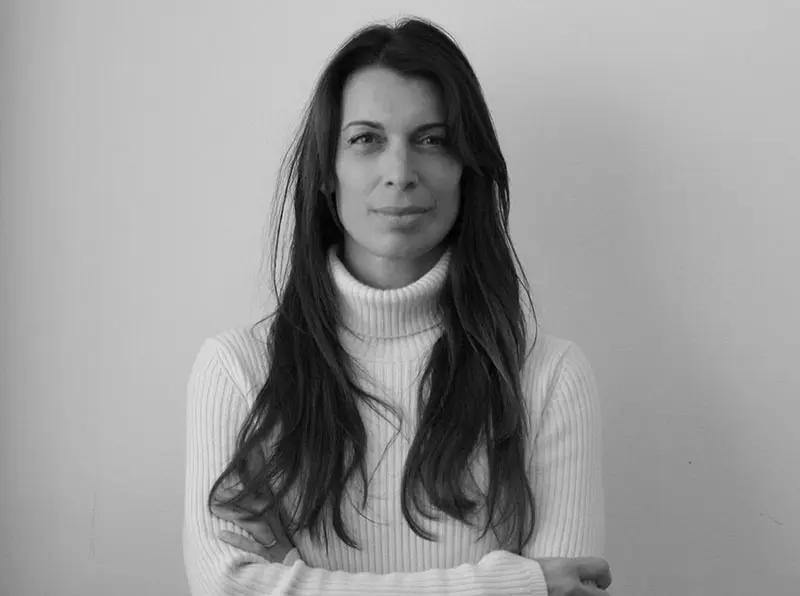
From the decades of experience of LIGHT and SPACE, a space dedicated to the
lighting design, in 2021 COMFORT HUB is born, a service reality
and interdisciplinary design for engineering and architecture, within the
which Chiara Tabellini heads the lighting department.
Comfort Hub's lighting department deals with integrated design and
independent, combining the technical requirements of plant engineering with aesthetics
of the architectural concept, paying particular attention to the
reference sector and guidelines for informed design and
sustainable, aimed at the psychophysical well-being of users in the spaces they live in.
